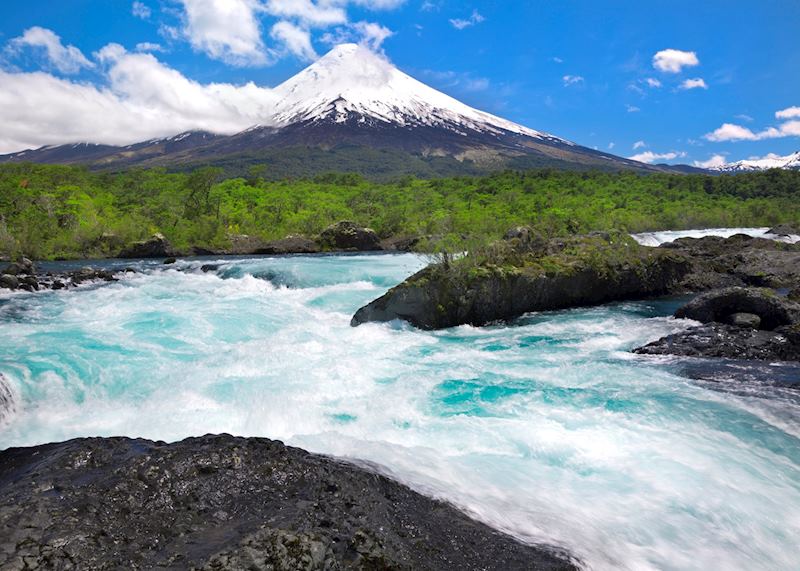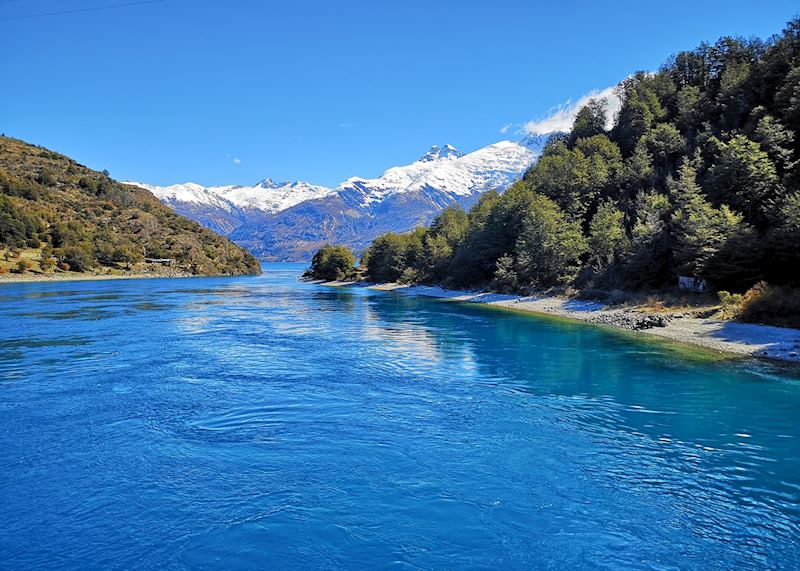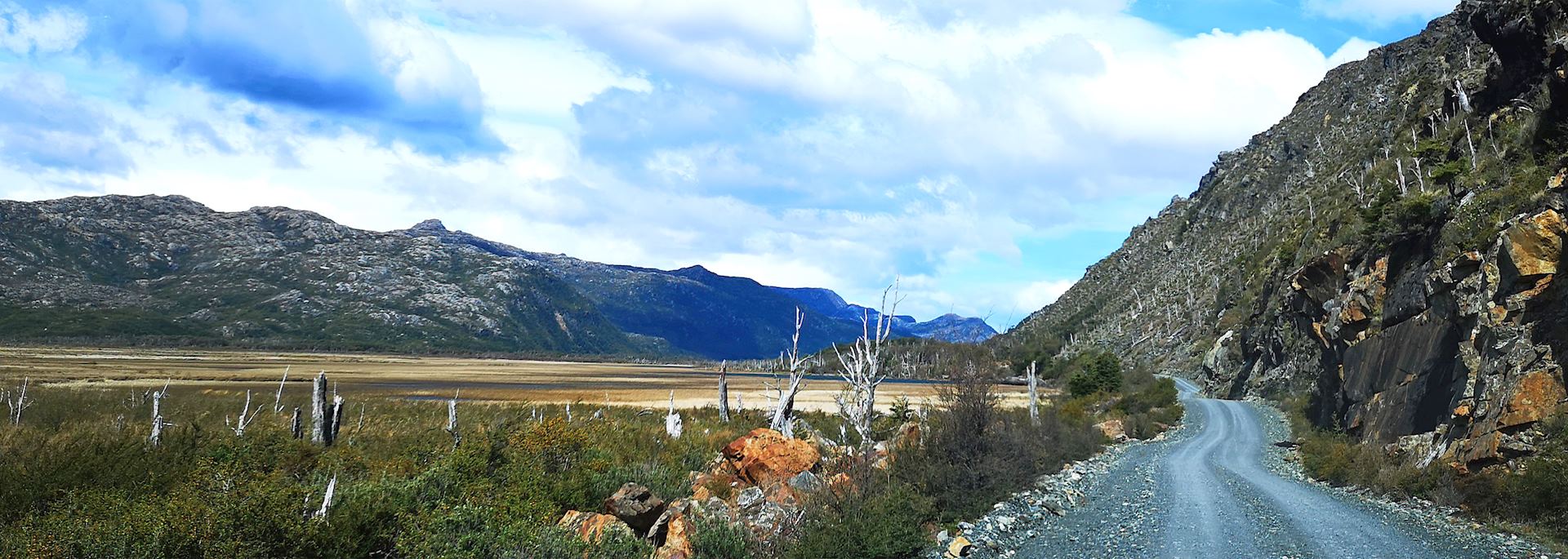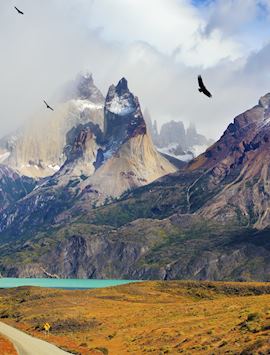Chile’s inconceivably long: to cover the whole country would be the equivalent of driving from London to Lagos, Nigeria. Better, then, to home in on just a few fulfilling but still appropriately epic routes.
I’ve road-tested options that take you through the heart of Chile’s (and Argentina’s) Lake Districts, then from the Lake District into the remotest northern reaches of Patagonia.
These drives offer real scenic grandeur — think volcanoes, glaciers, snow-smeared mountains, deep-blue lakes and dense forest. They’re off-the-beaten-track, but still are eminently doable.
The only qualifications you really need are a smattering of basic Spanish, familiarity with driving on gravel roads and a sense of adventure. You certainly don’t need to be an experienced off-roader.
I’d allow a minimum of two weeks per route, just so you can take your time and make the most of all there is to experience here. You could even — if you have the time and inclination — combine all three routes into one epic, six-week-to-two-month road trip.
Route 1. Looping the Lake Districts: Pucón to Puerto Varas via Argentina

The route in brief
This drive takes you through scenery that’s alternately bucolic and imposing. With so many green mountain pastures and evergreen forests, Chile’s Lake District can feel like Switzerland, but it’s also spliced with some showy volcanoes (see below).
You follow what’s become known as the Route of the Seven Lakes. From Pucón, head over the border to San Martín de los Andes, an Argentinian lakeside town that’s a little more low-key than Pucón and Villarrica, and a good spot for mountain biking or walks to lake-view lookouts. From here head south to Villa La Angostura, a town crammed onto a narrow peninsula. Across its lake, Nahuel Huapí, lies a forest of myrtle.
You swing back into Chile via Puyehue National Park, which has forests dotted with thermal springs and waterfalls (plus more volcanoes).
Highlights worth stopping for
Before you even get in the car, I suggest taking some time to gawp at Villarrica, quite possibly the most aesthetically pleasing volcano in all of Chile with its perfectly conical shape and often snow-drenched peaks. You can hike its slopes — or simply gaze at it lording it over the lake of the same name.
The whole region is full of rich pickings for hikers, with trails to suit all abilities. For example, in Villa La Angostura, you might like to take the catamaran across Nahuel Huapí Lake to walk among the fragrant orange trees that flourish in the nearby myrtle forest. You can either take the boat back, or hike home through the forest.
Adventurous activities and outdoor pursuits are everywhere in this part of Chile: pretty much everywhere you stop, there are opportunities for white-water rafting, kayaking, sailing, fly-fishing and horseback riding.
For a change of pace, you could examine some of the handicrafts made by the Lake District’s indigenous people, the Mapuche: your specialist will point you toward their go-to markets.
You can learn more about what to see and do en route in our guide to driving trips across Chile and Argentina.
Route 2. An island culture and northern Patagonia: Puerto Montt to Aysén

The route in brief
Puerto Montt, on the southern edge of the Lake District, gets a lot of rainfall, so you start this route hemmed in among vividly green temperate rainforest and mountains often smudged with low-lying clouds. Nearby, the monkey puzzle tree forests of Alerce Andino National Park are laced with hiking trails.
If you have the time to spare, drive southwest to take a ferry across to Chiloé Island, a place that feels very different to mainland Chile. Matted in forest, it has several curiosities: houses on stilts, a spate of wooden churches, Germanic folk music and a fierce loyalty to the Spanish (when Chile declared independence, Chiloé wanted to remain Spanish). You can read more about Chiloé’s distinctive personality, scenery and folklore in our highlights of Chile guide.
From Chiloé you backtrack to the mainland for four hours, staying the night in Puerto Varas. The next day, you take three ferries (less hassle than it sounds) through fjords to reach the hamlet of Caleta Gonzalo. I say hamlet — there’s a hotel and a campsite, and that’s it.
Heading south past the tiny town of Chaitén and down to Aysén, the landscape starts to open up, and you’ll start to get the wide-angle views you might associate with Patagonia: open grassland with looming, snow-covered mountain ranges in the distance.
Highlights worth stopping for
Chiloé Island has its own quirk-filled culture, but it’s also a hub for birdwatching: between November and March, you can observe penguins here. I recommend staying at Tierra Chiloé, which runs all-inclusive birdwatching-focused itineraries.
I’d stretch your legs at Caleta Gonzalo with a two-hour hike that starts just behind the hamlet’s only hotel. It leads up into dense rainforest and is marshy, so you’ll get to walk part of the route over boardwalks.
White-water rafters can also try the celebrated rapids at the town of Futaleufú near the Argentine border, where steep-sided mountains cascade down to meet a frothing river.
Approaching Aysén, the forest recedes, and you begin to drive through open steppe punctured by mountain ranges. You’re aiming for the turquoise body of water that is Lago General Carrera, but this isn’t journey’s end. Here, you can take kayaking or boat trips to the wind-and-wave-sculpted Marble Caves, which bear lofty names like the Chapel and the Cathedral. And, you can take a boat trip to hike on the behemoth Exploradores Glacier.
You can read more about both of these experiences (and why I think they’re worth doing) in my guide to activity-focused trips in Chile.
Route 3. Into the (Patagonian) wild: Aysén to Villa O’Higgins

The route in brief
This drive overlaps with Route 2, but starts at Balmaceda, a town you can fly directly into from Santiago, picking up your rental car from the airport.
This far south, tarmac peters out after about an hour and a half of driving, and the roads turn to gravel, although the route is being slowly paved over the coming years. You’ll begin with time at Lake General Carrera, where you can explore the aforementioned Marble Caves and Exploradores Glacier. The lake is overlooked by huge mountains, including Patagonia’s highest at over 4,000 m (13,123 ft).
From the lake, segue into Parque Patagonia, a former estancia turned national park that’s been rewilded. Patagonian foxes, vicuña and rhea now roam its fence-free grasslands and low mountains.
The highway then swings west to Tortel, a village build on wooden stilts and walkways and surrounded by cypress forest. It sits on the high banks of the Baker River, framed by more mountains. Back on the road, between muscular mountains, you’ll see big, open valleys splotched with the reddish swamps known as mallin colorado, and more rivers — some a white torrent, others a minty blue shade.
Villa O’Higgins is the literal end of the road before you hit the southern Patagonian icefields.
Highlights worth stopping for
One alternative to the Exploradores Glacier is a boat trip to San Rafael Glacier. At Puerto Chacabuco on Lago General Carrera, you can take a larger boat out through the fjords to reach the glacier snout, passing colonies of sea lions and seals along the way. On request, you can also take a much longer boat trip (12 hours) or a light aircraft flight to reach the O’Higgins Glacier terminal face.
One thing I love about this region is that, despite its remoteness, all hiking trails are well-marked. You’ll be driving along and a see a signpost for one clearly detailing the length and estimated duration of the trail, along with a map. This means that you can pretty much pull over where you please and set out for a walk.
In such a sparsely populated area, coming across other hikers or locals is rare, but everyone you do meet is inevitably friendly and welcoming. I saw a total of 15 people on a hike to a hanging glacier viewpoint one day, and that was busy. It’s certainly a far cry from the crowds that can swamp the much more famous Torres de Paine National Park.
Some good hikes in this area include a trail setting out from Mallin Colorado Ecolodge on Lake General Carrera. It’s a steep uphill climb to a lookout over the meeting point of two lakes separated by a terminal moraine, the sparkling sea-blue Lake Bertrand and the algae-green Lake Plomo. In Villa O’Higgins, there’s a sharp but rewarding ascent to a viewpoint planted with a Chilean flag, overlooking a mountain panorama.
Keep an eye out for wildlife as you walk or drive. From the car, I’ve seen guanacos, condors and even eagles, while in Parque Patagonia, you might see burrowing owls.
Read more about self-drive trips through Chile
Start thinking about your experience. These itineraries are simply suggestions for how you could enjoy some of the same experiences as our specialists. They're just for inspiration, because your trip will be created around your particular tastes.
View All Tours in Chile



